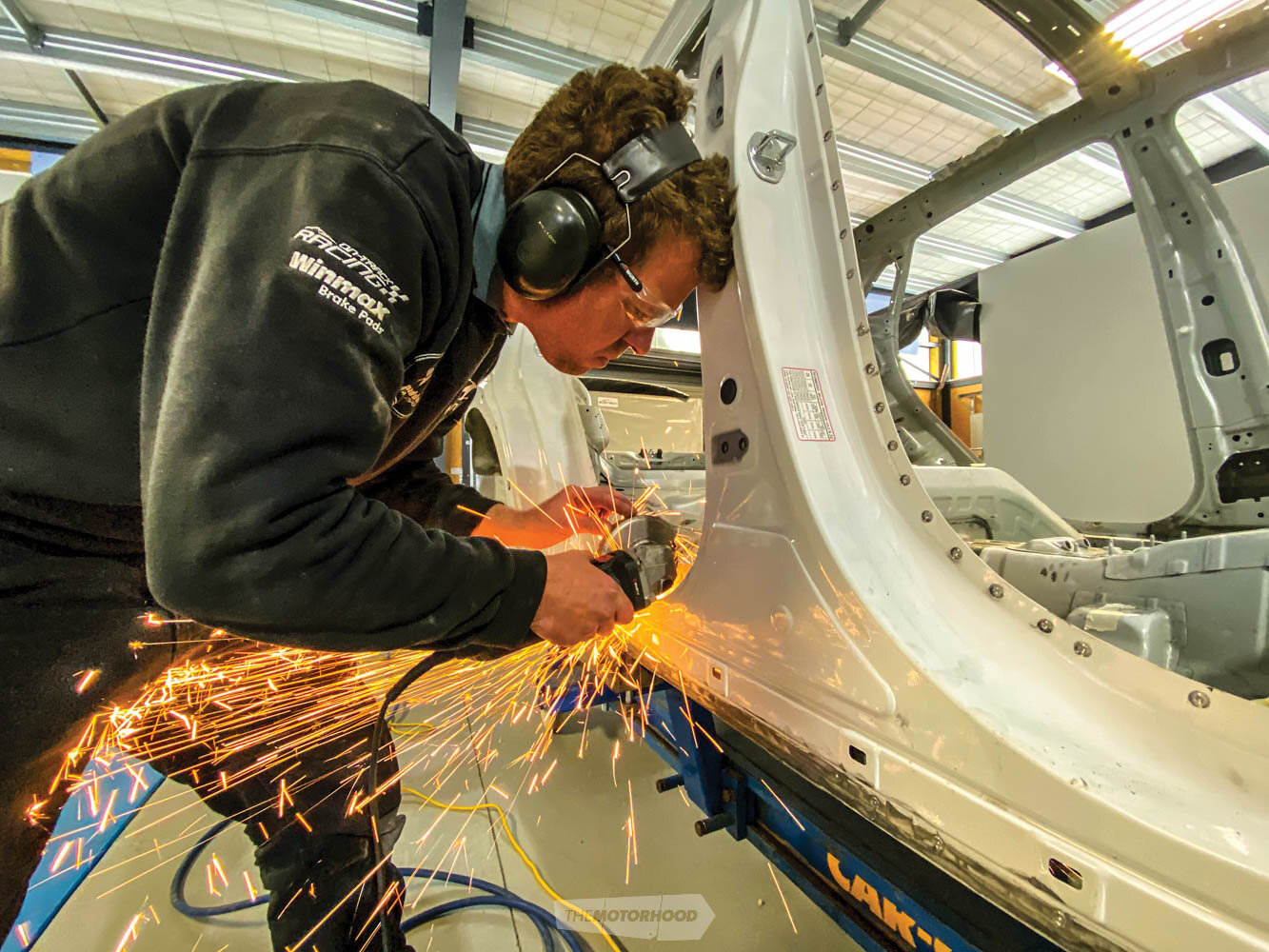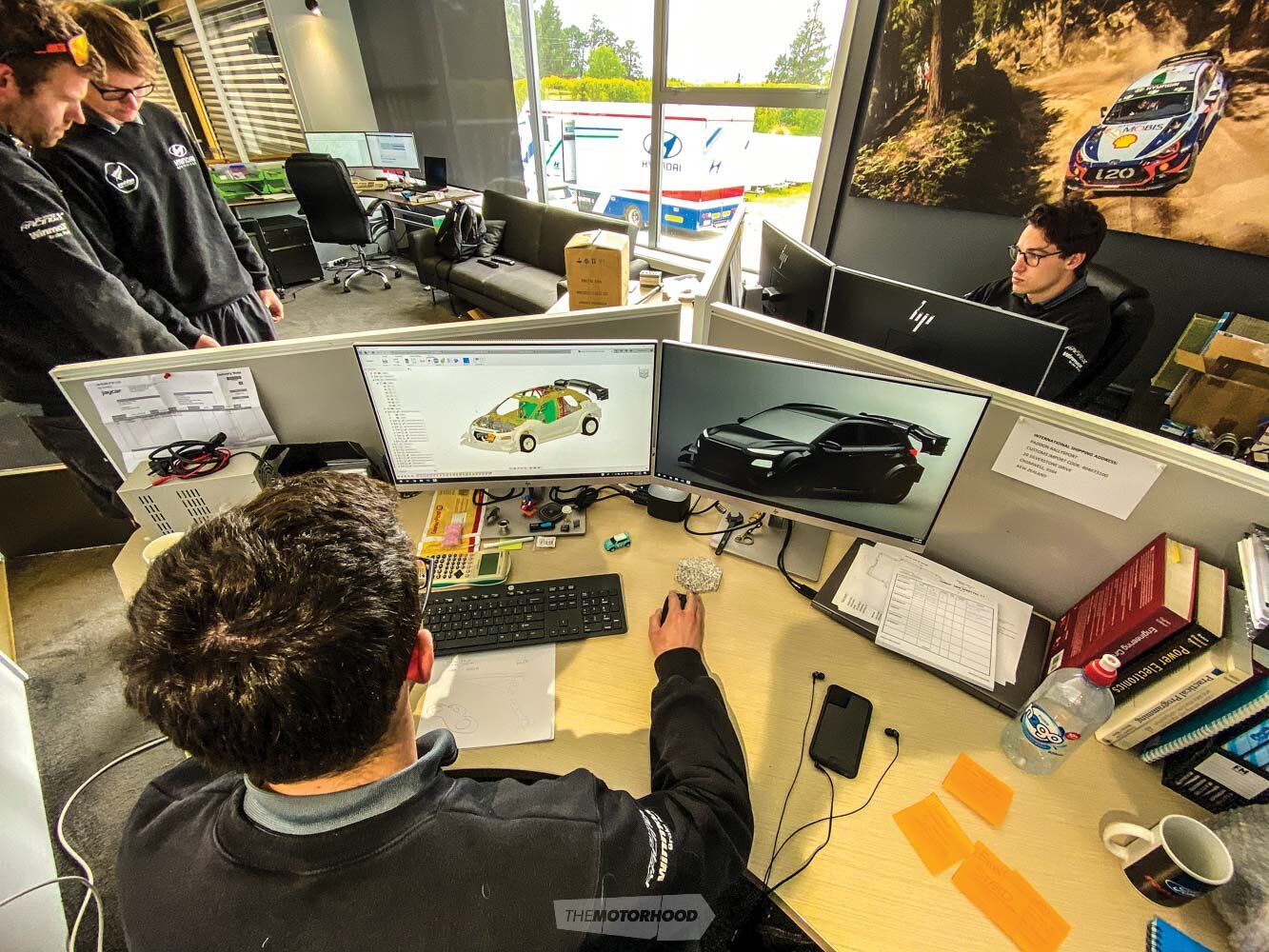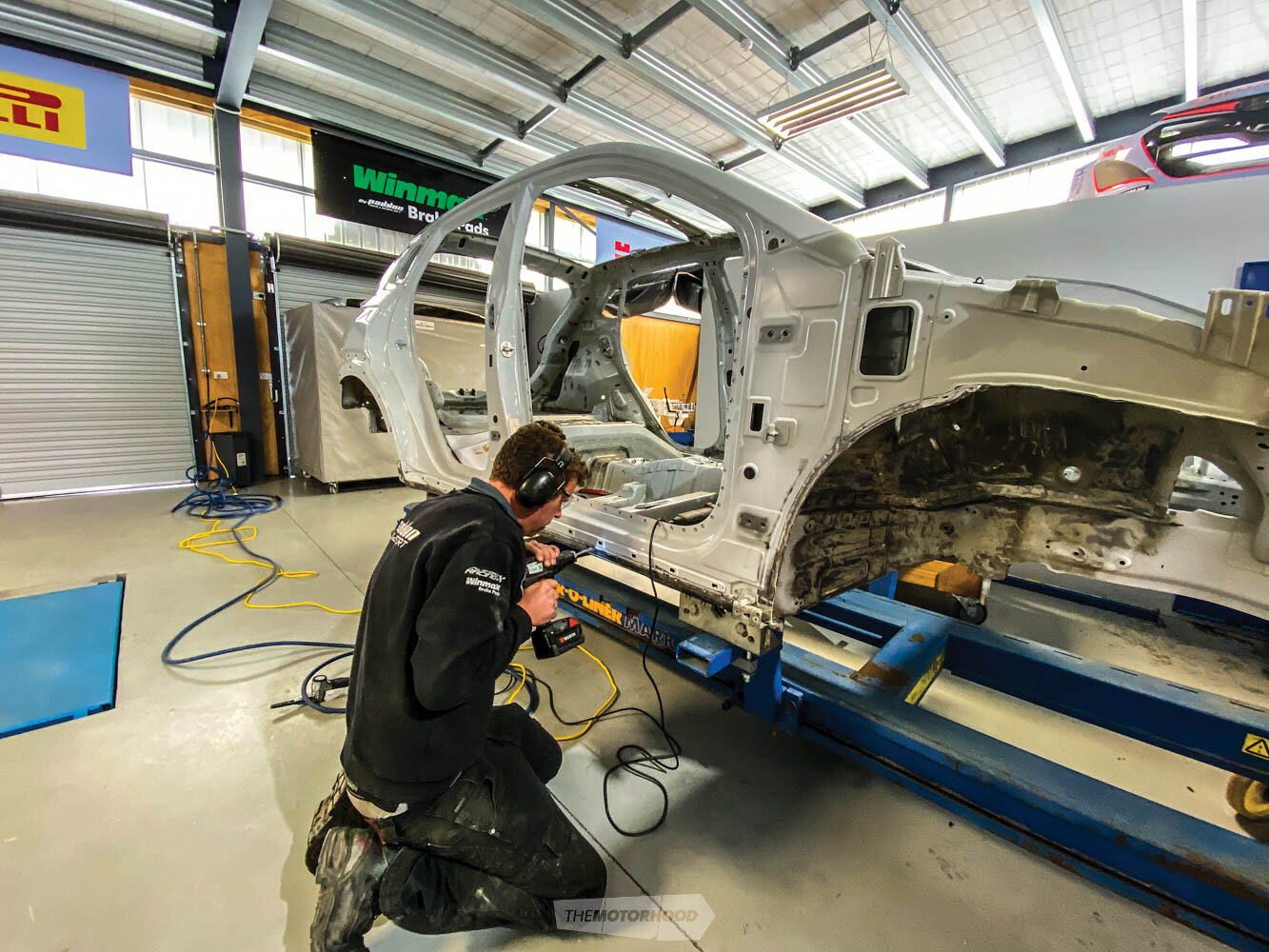
If you had asked me two years ago if we would build or race an EV rally car, I would have smiled at you and thought you were crazy. But such has been the development and advancement of technology in the automotive sector, that in a very short space of time it’s now not only feasible, but an incredibly exciting prospect for me — especially after recently driving a 600kW EV rallycross car in Europe. These cars will be very, very fast and spectacular.
I’m as much of a motorsport nut as anyone and love the dramatic nature of our sport. The thing that excites me the most about motorsport is the speed and the adrenaline. The only thing I have against EV motorsport is the lack of sound, but this is an engineering challenge that our small New Zealand team are tackling head on in order to find a new solution to add an element of sound to EV motorsport. So our EV rally car will make noise! Project manager and head engineer Matt Barham explains; “Electric powertrains are quiet (at least compared to an IC car), and this not only detracts from spectator engagement, but poses a safety risk. Our engineering team are prototyping a system that will give the car its own unique sound that rivals an IC rally car. This will remove the need for an early-warning siren (as seen on EVs competing in hill climbs).
The concept of this EV project that we are currently embarking on originally started in 2017. This was when I noticed that there was a far greater commercial interest for investment in such a project than once thought. After all, motorsport is expensive, and to attract funding from manufacturers or large corporate entities, you need to be relevant. This being the case, and coupled with my vision to build Paddon Rallysport Group into an international motorsport team, winning championships all around the world in the next five to ten years, I felt there was an opportunity now to get a jump start.

Of course, EV technology exists in other forms of motorsport — some focus on performance, some on range. With rallying, it’s a combination of both, which is why we have yet to see a top-tier EV rally car on the stages. Our current project began almost 12 months ago when we set up our new base at Highlands Motorsport Park, Cromwell, and recruited seven of the brightest young engineers and technicians. We all know the challenges we face, and while we plan this car to be running by April/May 2020, it will then require an extensive testing and development programme over the next 10 months. This will also entail competing on short-format events before we hit the rally stages in 2021. Matt Barham explains some of the challenges we face: “As with any ground-breaking project, one of the biggest challenges is trying to predict the unknown. Rally is one of the most demanding forms of motorsport, and introducing new technology into this environment is no easy task. The goal for the car is to contest a full season of the NZRC (New Zealand Rally Championship) alongside the internal combustion competitors without any special privileges (for example, extra ‘refuelling’ points for battery swaps). Compare the energy density of E85 to a lithium-ion battery and range anxiety begins to creep in. What capacity does the battery need to go between services? On which stages should energy be conserved in order to push later? How does the electric powertrain affect driving style and therefore energy consumption? These are some of the questions that need to be answered during the development stages of the car.”
With a project of this magnitude, we are designing and building as much in-house as possible. Although, as a team of seven, it’s difficult to be able to do everything at this early stage. So we have teamed up with Austrian motorsport technology company STARD, who are assisting us with the supply of specifically designed batteries, motors, and transmissions. Every other aspect of the project is done 100-per-cent in-house.
“With the extra weight of the batteries it’s also important we build the chassis to be as light and safe as possible”

For the last six months, our project manager, Matt Barham, and engineers, Rory Callaway and Jack Williamson, have been busy designing the concept using CAD software. Before we physically started building the car or chassis, it was important we ensured we had a design that was going to work. Having a clean slate to work from has given us a lot of freedom but it also creates more work. We have used the geometry of both the WRC and AP4 cars combined and have designed the chassis around the optimum chassis characteristics. We have also simulated it using the new weight distribution our EV will have.
The physical build of the chassis has now begun, and with the extra weight of the batteries it’s also important we build the chassis to be as light and safe as possible. Over the next month, we will see substantial progress in the chassis build and things will now begin to happen quickly as 90 per cent of the designs are now frozen on the computer. We are pleased to be working directly with NZ Performance Car to give readers exclusive updates on this build — so stay tuned here over the coming months.





